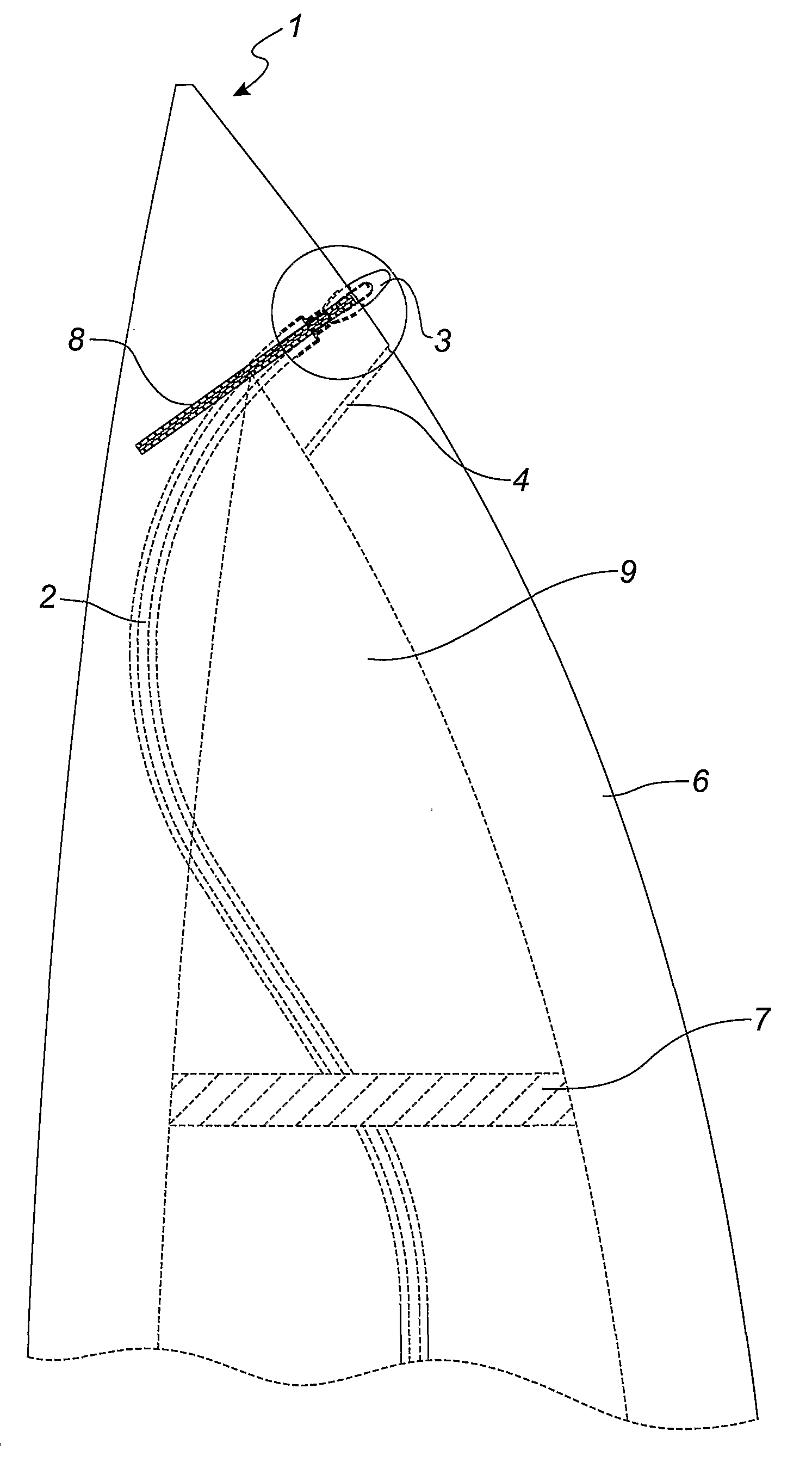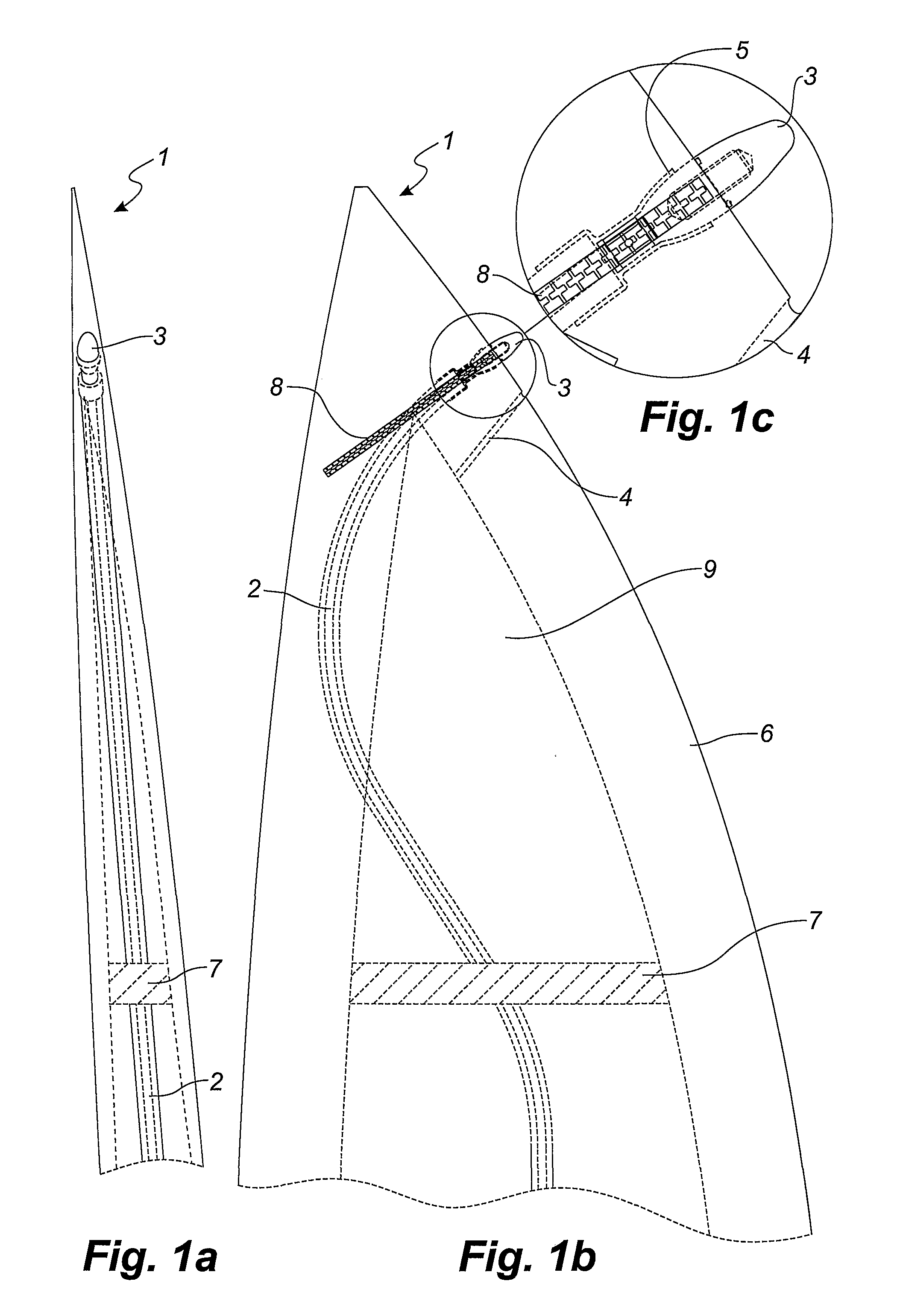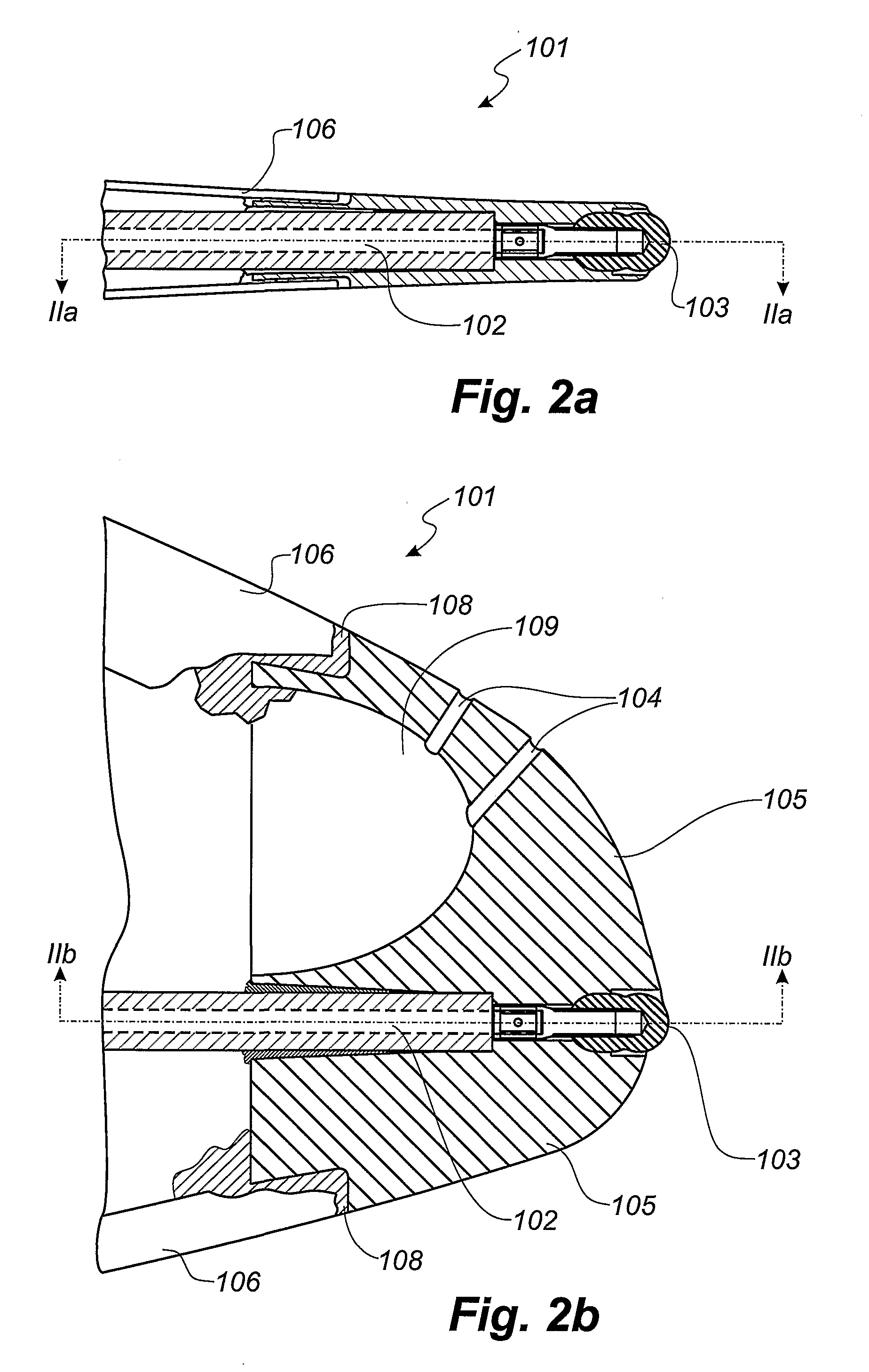Lightning Protection System for a Wind Turbine Blade
- Summary
- Abstract
- Description
- Claims
- Application Information
AI Technical Summary
Benefits of technology
Problems solved by technology
Method used
Image
Examples
first embodiment
[0030]FIG. 1 shows a blade 1 according to the invention. According to this embodiment, a lightning receptor 3 is positioned at the tip end of the blade 1, said lightning receptor preferably, but not necessarily, being predominantly egg-shaped or formed like a so-called Franklin rod. The lightning receptor 3 is connected to a lightning conductor 2 extending substantially in the entire longitudinal direction of the blade 1 from the lightning receptor 3 at the tip of the blade 1 to the root area of the blade 1 at the rotor hub. Preferably, the lightning conductor portion is electrically connected to the hub, and lightning current from lightning striking the lightning receptor 3 can thus be led to earth via the lightning conductor 2 and the hub, said hub being earthed via a second lightning conductor (not shown) connected to an earth rod by means of e.g. the tower and the nacelle. Furthermore, one or more spark gaps may be provided between the lightning conductor 2 and the hub or betwee...
second embodiment
[0036]FIG. 2 shows a blade 101 according to the invention. The blade 101 according to this embodiment has a tip 105 formed as a solid body of e.g. polyurethane, PVC or fibre-reinforced polymer. The rest of the blade 101 is made of a shell body having a laminate shell 106. As in the embodiment shown in FIG. 1, the lightning protection system of the blade includes a lightning conductor 102 extending substantially in the entire longitudinal direction of the blade 101 from the root end at the rotor hub and to the tip end. The lightning conductor 102 is guided out of the cavity of the blade 101 and into a hole created in the tip 105 and matching the lightning conductor 102. The lightning conductor may be glued to this hole. The lightning conductor is connected with a substantially egg-shaped lightning receptor 103. The lightning receptor 103 is positioned at the surface of the tip 105 so that a small portion thereof projects from the surface. The position and the form of the receptor 103...
third embodiment
[0039]FIG. 3 shows a blade 201 according to the invention. The blade 201 according to this embodiment has a tip 205 formed as a substantially solid body of e.g. polyurethane, PVC or fibre-reinforced polymer as in the embodiment shown in FIG. 2. The rest of the blade 201 is made of a shell body having a laminate shell 206. As in the embodiments shown in FIG. 1 and FIG. 2, the lightning protection system of the blade 201 includes a lightning conductor 202 extending substantially in the entire longitudinal direction of the blade 201 from the root end at the rotor hub and to the tip end. The lightning conductor 202 is guided out of the cavity of the blade 201 and into a hole created in the tip 205 and fitting the shape of the lightning conductor 202.
[0040]The lightning conductor 202 is connected to a lightning receptor 203 having a rounded shape and positioned at the apex of the tip 205. The lightning receptor 203 is adapted so that there is a substantially smooth transition between the...
PUM
 Login to View More
Login to View More Abstract
Description
Claims
Application Information
 Login to View More
Login to View More - R&D
- Intellectual Property
- Life Sciences
- Materials
- Tech Scout
- Unparalleled Data Quality
- Higher Quality Content
- 60% Fewer Hallucinations
Browse by: Latest US Patents, China's latest patents, Technical Efficacy Thesaurus, Application Domain, Technology Topic, Popular Technical Reports.
© 2025 PatSnap. All rights reserved.Legal|Privacy policy|Modern Slavery Act Transparency Statement|Sitemap|About US| Contact US: help@patsnap.com



